The figure shows elliptical orbit of a planet m about the sun S. The shaded area SCD is twice the shaded are SAB. If t1 is the time for the planet to move from C to D and t2 is the time to move from A to B then ......
 Solution in Gujrati
Solution in Gujrati
t1=4t2
t1=2t2
t1=t2
t1>t2
The correct Answer is:B
⇒ According to Kepler.s law, the areal velocity of the planet around the sun is constant .
∴Area (A1) of SCDtimet1=Area (A2) of SABtime t2
∴A1t1=A2t2
∴t1=t2A1A2 but A1=2A2
∴t1=t22A2A2
∴t1=2t2
Topper's Solved these Questions
- BOOK - KUMAR PRAKASHANCHAPTER - GRAVITATIONEXERCISE - Section - F Questions from Module20videos
GRAVITATION
- BOOK - KUMAR PRAKASHANCHAPTER - GRAVITATIONEXERCISE - QUESTIONS PAPER Section - A6videos
GRAVITATION
- BOOK - KUMAR PRAKASHANCHAPTER - GRAVITATIONEXERCISE - Section - D NCERT Exemplar Solutions (Long Answer Type Question )5videos
GRAVITATION
- BOOK - KUMAR PRAKASHANCHAPTER - LAW OF MOTIONEXERCISE - (QUESTION PAPER) SECTION-D1videos
LAW OF MOTION
Similar Questions
Two particles of equal mass m move around a circle of radius R under the influence of their mutual gravitational attraction, the speed of each particle with respect to their center of mass will be ..........
01:17View SolutionThe magnitude of gravitational intensity at a point is 0.7 N/kg. What would be the magnitude of the gravitational force on a body of 5 kg mass at this point ?
01:19View SolutionA star like the sun has several bodies moving around it at different distances. Consider that all of them are moving in circular orbits. Letr be the distance of the body from the centre of the star and let its linear velocity be v, angular velocity , ω kinetic energy K, gravitational potential energy U, total energy E and angular momentum I. As the radius r of the orbit increases, determine which of the above quantities increase and which ones decrease. As shown in figure, where a body of mass m is revolving around a star of mass M. Linear velocity of the body,
02:07View SolutionA 70 kg man stands in contact against the inner wall of a hollow cylindrical drum of radius 3 m rotating about its vertical axis with 200 rev/min. The coefficient of friction between the wall and his clothing is 0.15. What is the minimum rotational speed of the cylinder to enable the man to remain stuck to the wall (without falling) when the floor is suddenly removed ?
03:47View SolutionThe motion of a planet around sun in an elliptical orbit is shown in the following figure. Sun is situated at one focus. The shaded areas are equal. If the planet takes time t_1 and l_2 in moving from A to B and from C to D respectively, then
02:47View Solution_S01_025_Q01.png)
The figure shows elliptical orbit of a planet m about the sun S. the shaded area SCD is twice the shaded area SAB. If t1 be the time for the planet to move from C to D and t2 is the time to move from A to B, then:01:40View SolutionThe figure shows elliptical orbit of a plant P about the sun S. The shaded area CSD is twice tha shaded area ASB. If t_(1) is the time taken by the planet to move from C to D and t_(2) is the time to move from A to B, determine the ratio t_(1)//t_(2)
01:19View SolutionThe figure shows the elliptical orbit of a planet about the sun S. An ellipse is the curve obtained when a cone is cut by an inclined plane. It has two focal points. The sum of the distances to the two focal points from every point on the curve is constant. F1 and F2 are the two focal points of the ellipse . The shaded area CF1D is twice the shaded area AF1B.t1 is the time taken by the planet to move from C to D and t2 is the time to move from A to B
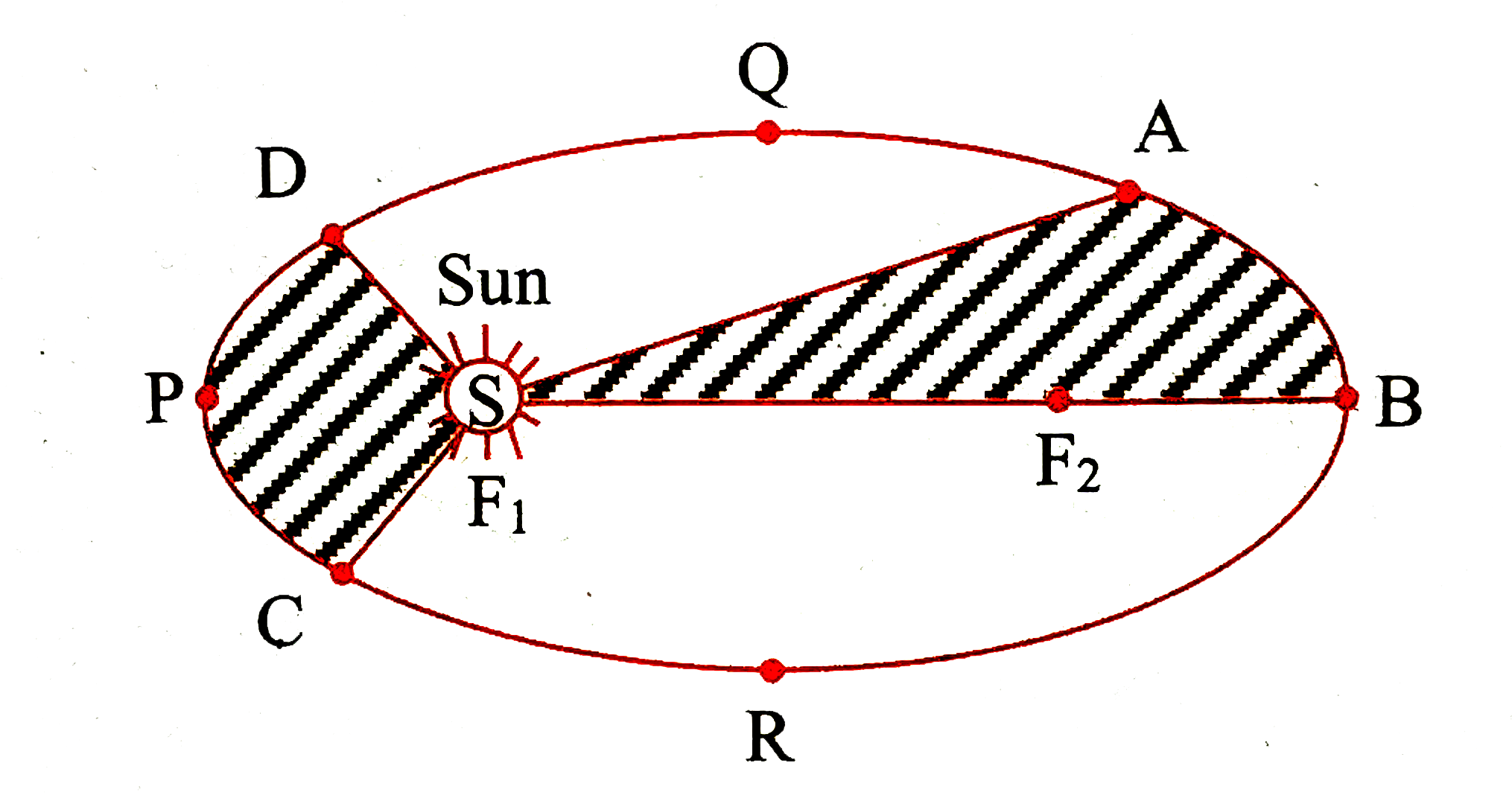
State the law regarding the time period of revolution of a planet .03:18View SolutionThe figure shows the motion of a planet around the sun in an elliptical orbit with the sun at one focus. The shaded area SAB is twice that of SCD. If t1andt2 are the times taken by the planet to move from A to B and C to D respectively, then
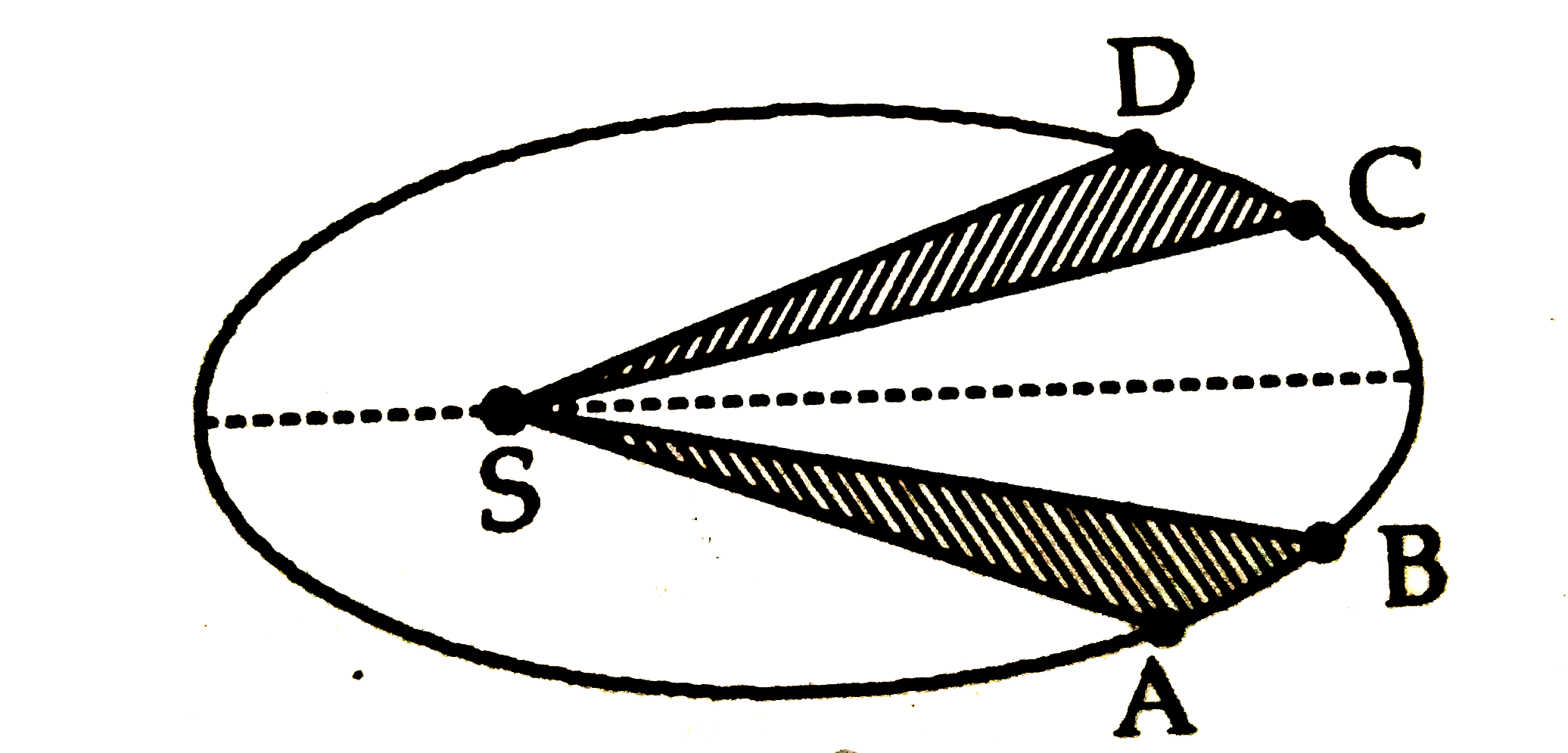 View Solution
View SolutionThe given figure shows the elliptical orbit of a planet m about the sun S. If t1 is the time taken by the planet of move from C to D and t2 is the time taken by the planet to move from A to B, then the relation between t1andt2 is [Given, area SCD = 2 (area SAB)]
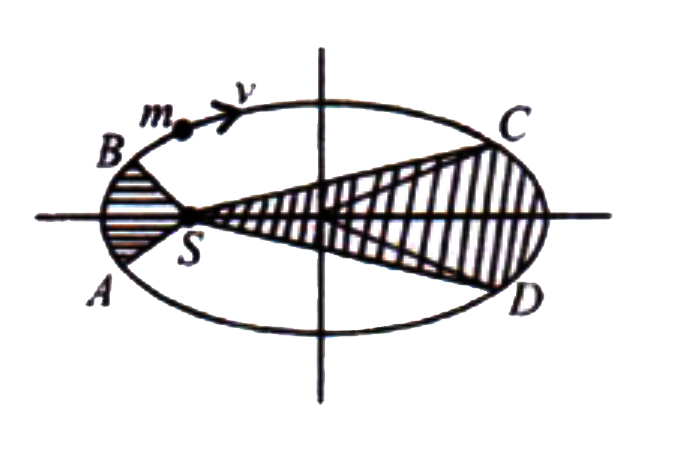 View Solution
View SolutionThe figure shows elliptical orbit of a planet m about the sun S. The shaded area of SCD is twice the shaded area SAB. If t_1 is the time for the planet to move from D to C and t_2 , is time to move from A to B, what is the relation between t_1" and "t_2 ?
02:58View SolutionThe figure shows elliptical orbit of a planet 'M' about the Sun 'S', the shaded area SCD is twice the shaded area SAB. If t_(1) is the time for the planet to move from C and D and t_(2) is the time to move from A to B then.
02:56View SolutionAs shwon in figure , a planet revolves round the sun in Elliptical orbit the sun at the focus. The shaded area can be assumed to be equal. If t1 and t2 represent the time taken for the planet to move from A to B and C to D respectively, then
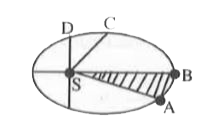 02:41View Solution
02:41View SolutionAs shown in figure, a planet revolves round the sun in Elliptical orbit with sun at the focus. The shaded areas can be assumed to be equal. If t1andt2 represent the time taken for the planet to move from A to B and C to D respectively, then
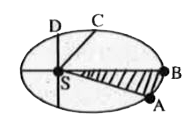 02:01View Solution
02:01View SolutionThe figure shows elliptical orbit of a planet m about the sun S. the shaded area SCD is twice the shaded area SAB. If t_(1) be the time for the planet to move from C to D and t_(2) is the time to move from A to B, then:
01:47View Solution

